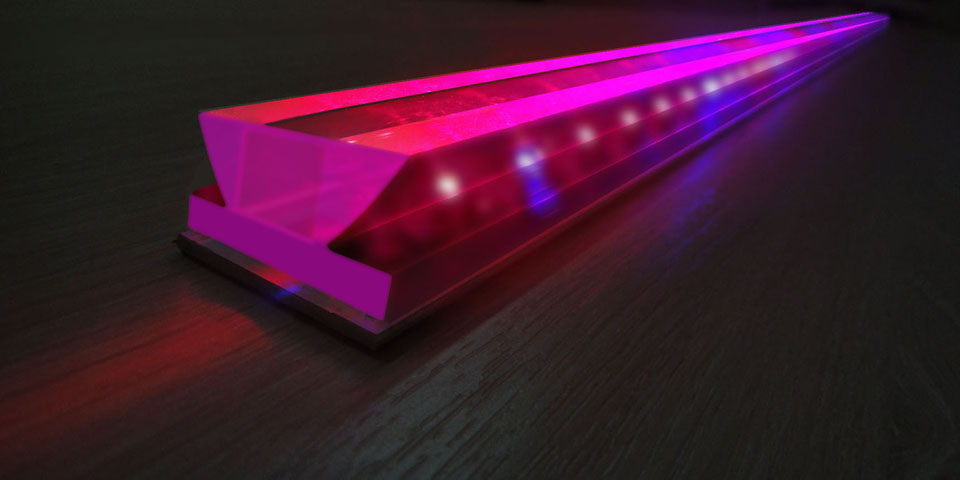The LED module «Ruby-75» is intended for work in greenhouses as a part of the system of electrical supplemental lighting for indoor growing plants. The power consumption of one LED module is 75 W. The LED module is designed to light an effective area of 1m
2.
This advanced development offers such exclusive benefits as:
- a preset adhesive tape which provides fast and easy mounting of the modules installed on an aluminum profile;
- in-line layout of light sources generating uniform illumination of plants with possibility of changing height of suspension;
- replaceable secondary optics creating the radiation pattern optimal for a specific topology/geometry/size of a greenhouse (without an unproductive lighting of other areas) and cenosis nature;
- module lighting allows to organize effective electrical supplemental lighting in multi-level greenhouses, while gas-discharge lamps are absolutely not suitable for solution of such tasks;
- the LED modules are supplied from 36V DC circuit that is safe for workers in greenhouses;
- program-operated power sources allow to adjust not only luminous flux but also to provide an opportunity to create a pulse character of lighting. Such solution can significantly reduce power consumption, at the same time maintaining crop yields.
It should be separately noted that a low cost of complete equipping of the greenhouse with the module phyto lamps «Ruby-75» is fully comparable with the costs for purchasing and installation of traditional gas-discharge equipment.
Why the LED module «Ruby-75» is better than gas-discharge analogues?
- LED service life 5-10 times longer than characteristics of gas-discharge lamps. And using the LED modules does not involve risks of equipment breakdown due to surges in the power supply system.
- The LED modules give substantial energy saving from the first minutes of using. In general total power consumption of these lamps is 3-5 lower than in the case of using gas-discharge light devices (one 75 W light module is approximately equivalent to 250 W sodium gas-discharge lamp by their effect).
- Mounting of the LED modules does not involve costs for additional power supply that requires significant investments at the present. During starting operation, gas-discharge lamps have a high starting (three-time) current, and all calculations are performed taking into account this factor. In each case of interruption of power supply for gas-discharge light sources, it takes 15-20 minutes for cooling and restarting them. Such pauses have a negative impact on a greenhouse microclimate and crop growth.
- If in the greenhouse, there is a gas powered electrical generator (mini-TPP) giving low-cost energy, the LED technologies allow to double or even triple the number of cultivated areas without increasing the number of gas powered electrical generators. Accordingly, profitability of such greenhouse increases in times in comparison with complexes where gas-discharge lamps are used.
- The LED phyto lamps may be installed as close as possible to plants and seedlings without causing them burns and improper growth that occurs due to long-term exposure them under gas-discharge light sources.
- The LEDs are almost not heated, enabling to maintain an optimal microclimate in a greenhouse. At the same time, switching gas-discharge lamps on and off results to rapidly changing temperatures (average of 6°Ń) which requires compensation solutions.
In view of the above:
If you wish to go with the times, reducing the costs for maintenance of greenhouses without crop yield losses, — the LED module «Ruby-75» will enable you to see in practice multiple benefits of these advanced technologies.

